Running with bunions. Those unsightly protrusions from the base of your big toe that make running painful and put holes in the sides of your shoes.
Even the scientific name is terrible: hallux valgus.
These embarrassing foot conditions affect about a quarter of the population and can cause severe pain and even hinder daily activities like walking and running. Fortunately, there’s a way to prevent them reaching such an extreme level.
Can you run with bunions?
For sure. The biggest limiter will be finding a shoe fit that allows you to run without pain. We’re going to dive more in to each of these below!
- Find the right shoes
- Try additional toe spreading tips
- Try including some foot massage and strength
Ok now that we’ve answered your first burning question, let’s better understand what a bunion is and how to detail with it.
So what exactly are these bumps and what can we do about them?
What are Bunions?
A bunion, medically referred to as hallux valgus, is a when the first metatarsophalangeal joint (MTP) of the big toe pushes inward (medially). The result is that bone pushing farther to the inside of your foot, which causes it to then rub painfully on shoes.
Your big toe will now be pointing more towards your small toes rather than straight ahead.
It’s far more common that you might assume, which also means we have some great ideas for helping you to run with a bunion and less pain. Over 23% of adults (usually female) have dealt with a bunion.
What Causes Bunions?
Like any foot issue, there are a number of causes of bunions.
- low arches
- flat feet
- loose joints and tendons
- weak foot muscles
- runs in families, as some foot shapes are more prone to them
- Occupations that require long periods of standing, such as nurses, teachers, or cooks and servers in restaurants
- Pregnancy can also lead to bunions thanks to hormonal changes that can loosen the ligaments and flatten the arch (which is why insoles are helpful).
But, the most notable cause is likely due to wearing narrow shoes with pointed toes.
A tapered toe box forces the big toe joint (known medically as the first metatarsophalangeal joint, or MTP for short) into the space where the second toe belongs. Prolonged pressure causes the MTP to protrude outward and the big toe to point inward, sometimes crossing over or under the second toe, causing a hammertoe.
Sometimes, the same issue occurs in the fifth metatarsal (pinky toe) causing a bunionette.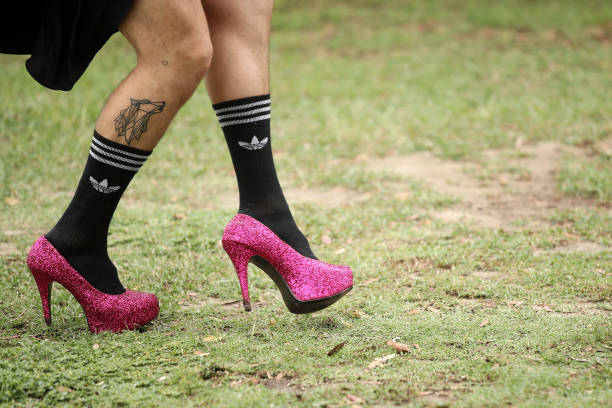
In fact, Dr. Gaby Go, DPT, PT, says “When working with patients who are dealing with bunions, one of the most impactful things you can do to prevent bunion formation is ensure that the toe box of your shoe is wide enough to accommodate all your toes. The goal is that you can comfortably spread your toes within the shoe itself. ”
Is a Bunion a Bone Growth?
Contrary to what most think, the bump that sticks out is not a bone growth, it is the first metatarsal bone pushing outward, while the big toe points toward the second toe.
Women are 10 times more likely than men to experience bunions, largely due to high heels. Heels over two inches tip our body weight forward, squishing the toes into the front of the shoe, creating the perfect situation for bunion formation.
Unfortunately, most shoes on the market, including running shoes, are designed with this tapered toe leaving many of us susceptible to bunions.
YESSS this is why I’ve talked a lot about lower profile shoes, you don’t need to go barefoot, but start watching the heel drop they list in descriptions.
Up until two years old, babies’ shoes are designed to accommodate our natural foot shapes, in order to make balance for walking easier. After that, we begin to see the tapering of the toes in footwear.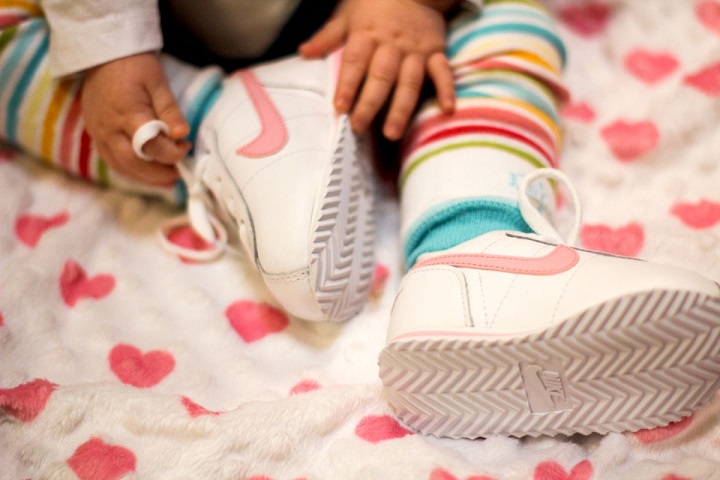
Notably, bunions (among other foot problems like plantar fasciitis and hammertoes) in barefoot societies are rare. So that whole barefoot running thing, maybe there’s something to it, after all…thought I’d much prefer you checkout a shoe like Altra.
Does Running Make Bunions Worse?
Running is not directly to blame for causing bunions, rather they are caused by ill-fitting running shoes.
We often hear the terms “zero drop” or “2-mm drop” in relation to running shoes. What this refers to is the difference in height between the heel and the forefront of the shoe. Most running shoes are designed with elevated heels and and tapered toe box.
Mile after mile, particularly for long distance runners, this can lead to or exacerbate the discomfort of bunions.
Runners with bunions or those who wish to prevent the deformity, should look for properly-fitting shoes with the following features:
-
- A wide toe box that allows the toes to spread fully.
- A flexible sole, which helps strengthen the foot muscles opposed to a rigid sole that limits range of motion in the foot.
- Zero toe spring. Shoes have incorporated a toe spring that lifts the toes and overextends the plantar fascia. This is often the culprit for other foot problems such as shin splints, plantar fasciitis, neuromas, and more.
- A flat heel, which promotes proper alignment of the body.
- Checkout our best running shoes for bunions (from fellow runners who’ve dealt with it.)
According to DPT Amie Ramczyk, “a lot of people who have bunions have flat feet and walk with feet turned out, causing them to roll off the bunion and not the big toe. This then causes decreased ROM in the big toe and ankle as well and can lead to other issues up the chain.”
So it’s the result of how you change your gait repeatedly that leads to issues, rather than just the bunion itself.
The goal of finding the right shoe or working through some strength exercises for your feet is to help prevent that supination.
11 Bunion Treatment Home Remedies
Most assume that their only bunion treatment are bunion surgeries, however those are really only recommended as a last resort, when the pain is impacting your daily life.
Recovery from surgical procedures can take anywhere from six months to a year, so if you’re a runner, that’s not exactly ideal. Often, the surgery doesn’t last, and the bunion returns once again.
The good news for those suffering from bunions is that there are plenty of at-home treatments that can help relieve pain and even correct the bunion in some cases.
#1 Wear Daily Appropriate Shoes
The first step is changing your shoes.
All of your shoes.
Not just your running shoes.
The brands listed above also design every day shoes, some even work-appropriate. There are plenty of companies who make shoes that accommodate the toes properly. Here’s a list of Correct Toes-approved shoes that others have compiled.
#2 Choose Better Running Shoes
As noted above, moving to a Zero Drop shoe or simply one of the models with a wider toe box will help tremendously.
#3 Change Your Shoe Lacing
There are multiple ways to lace your running shoes that will result in more space around the toebox. This could go a long ways toward making any shoe feel more comfortable.
👉See How to Lace Your Running Shoes for Pain Relief >>
#4 Consider an Insole
Initially, you need to do some gait retraining to help your brain and feet remember how to hold the arch up correctly. Ideally you won’t need arch support forever, but they can be a great tool
Start by using them in your daily shoes or during some runs, but continue doing all of the exercises below to really make a lasting difference.
👉Here are some of the best running insoles >>
#5 Try Toe Spacers
Think of toe spacers like braces for your feet. They help correct the alignment of the toes over time. Bodhi Feet and Yoga Toes are two well-known brands designed to help correct the foot shape.
You’ll need to build up your tolerance at first. Wearing them too long can cause painful leg cramps. Eventually, you’ll wear them throughout the day, so it’s important to find a shoe that accommodates your foot during use.
Alternatively, you can also wear a splint at night to help keep the toe in the correct position.
#6 Add Padding around Bunion
Moleskin and gel pads can help protect the bunion from rubbing against your shoe. Both are widely available in drugstores.
You can also try shoe inserts designed to position the foot correctly and raise the arch.
#7 Taping for Arch Support
I’m a big fan of using Kinesiology tape. It was a game changer for me during a knee injury both before and after surgery.
In this case you could be taping for a couple of reasons:
- Along the area of pain, taping with no stretch can help to slow pain signals
- Taping along the arch to provide more support so your foot is not collapsing
TIP: Use hand sanitizer on the area prior to placing the tape. It will help it to stick longer! I also prefer RockTape for longer staying power.
#8 Try Post Run Icing
In most cases, I tell you that we want to go with heat instead of ice to loosen muscles etc. However, for a bunion we simply want to reduce any swelling and to stop the pain signals, so ice is a great option.
Remember no more than 10 minutes at a time.
#9 Painkillers
Over the counter painkillers like ibuprofen and acetaminophen can help temporarily alleviate the pain, however make sure you read all about how to use them safely. Taking them pre-run can do all kinds of bad things to your liver.
Which is why you often hear me talk in stead about CBD pain relief muscle rub and turmeric.
#10 Bunion Exercises
There are simple foot exercises and toe stretches you can do to help train the big toe to go back toward alignment and increase flexibility. You know I love a bunion treatment that you can take charge of!
Practiced every day, they can make a significant impact in the pain associated with bunions as well as slow the progression.
Toe Yoga
Jay Dicharry, director of Rep Lab in Bend, OR and author of Running Rewired suggests daily “toe yoga” to develop muscle coordination in the feet.
- With your feet flat on the floor, lift just your big toe and hold it in the air for one second.
- Lower the toe and lift the remaining four toes for one second.
- Alternate between the sets for 2 to 3 minutes on each foot.
Big Toe Stretches
With your foot flat on the floor, take your big toe with one hand and slide it away from the remaining toes into its natural alignment, while still keeping it on the ground. This stretches the muscle responsible for controlling the big toe, the adductor halas.
- While holding your toe out, massage this muscle by running your thumb down your foot between the first and second toe.
- You may find a trigger point, which indicates an area to pay more attention to during the massage.
- Hold the toe in this position for 10 seconds while massaging and repeat three to four times.
Resistance Exercises
Take your hand or a resistance band and pull your big toe toward you while using your big toe to push against the resistance. Keep your feet either flat on the ground or flexed in front of you while sitting on the floor.
Towel Scrunches
Place a towel on the ground and use your toes to scrunch the towel toward you. Repeat five times. A similar exercise is to pick up marbles or other small objects with your toes. Place 20 or so on the ground and pick them up one by one with your toes and place them in a bowl.
#11 Ball Rolling for Massage
Get a textured foot massage ball and massage your feet for several minutes each day. Be sure to roll the ball along each metatarsal of the foot. This is an excellent exercise to stretch the muscles and relieve tension.
Running with bunion pain, shouldn’t be the thing that stops you. Don’t be afraid to keep testing shoes and exercises!
If you’re dealing with other issues, checkout these articles for more tips:
Are you a runner with bunions?
What recommendations do you have for fellow bunion sufferers?
Other ways to connect with Amanda
Instagram Daily Fun: RunToTheFinish
Facebook Community Chatter: RunToTheFinish
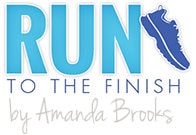
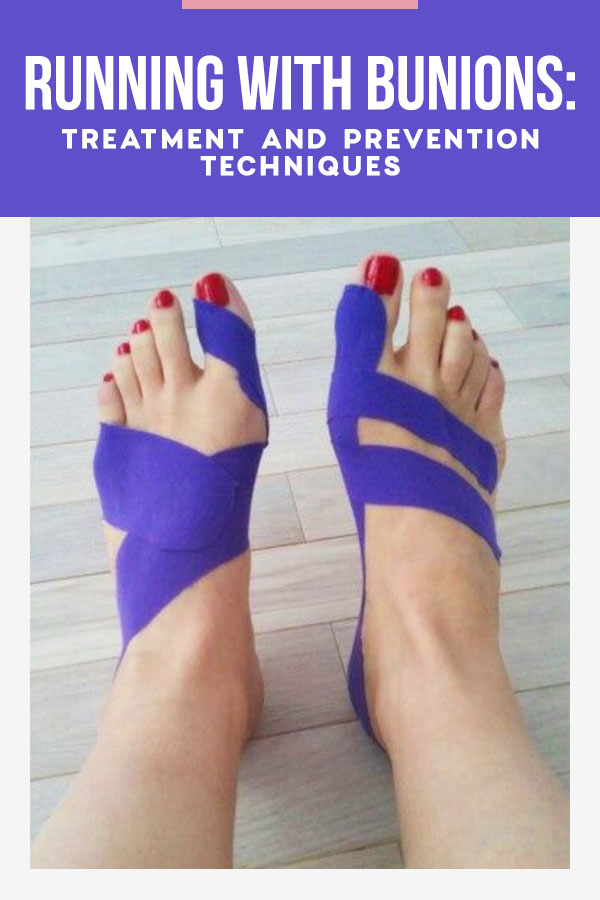

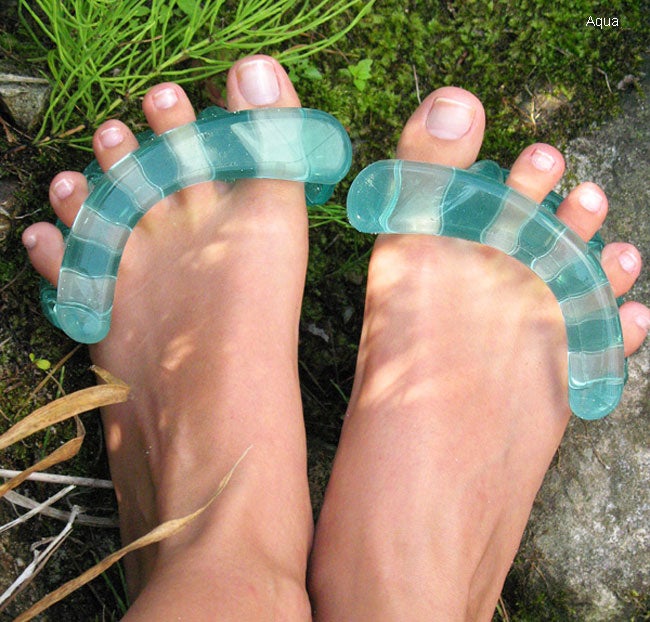


 4 Hour Marathon Training Plan and Training Tips
4 Hour Marathon Training Plan and Training Tips
Laura Johns
Interesting! You always have the best, most informative posts!
I have flat feet, but haven’t had any issues with bunions. I have Accessory Navicular Syndrome which can be inconvenient though. https://262.run/2019/05/16/running-with-accessory-navicular-syndrome/ You can read about it here if you like!
Loribeth
I do have a bunion on my right foot. Pretty big, although it only occasionally bothers me with running. I typically wear wide shoes, except for my Converse, but they are stretchy and have never caused me issues. I do get cramps/charley horses in my toes on both feet more often in the last 2 years than before and I wonder if this is related….hmmmm…
I love Saucony Guides, and I actually do ok with Brooks Launch and Ravenna, as long as I go a half size up or order in wide.
Thanks for all the advice!